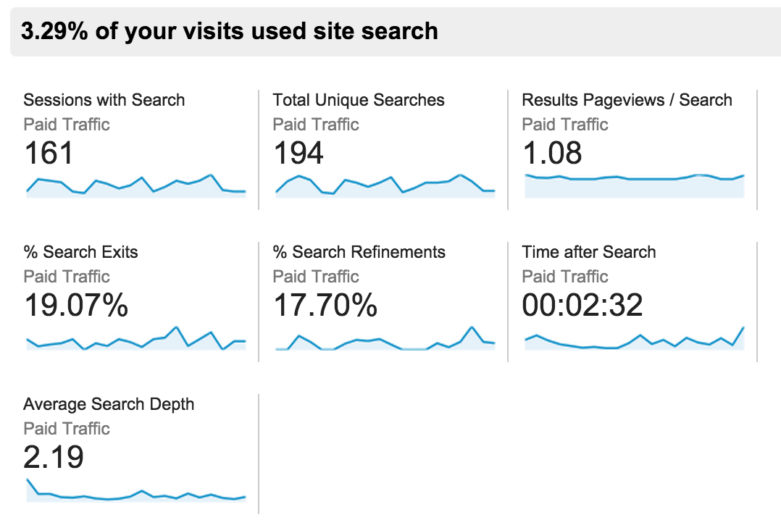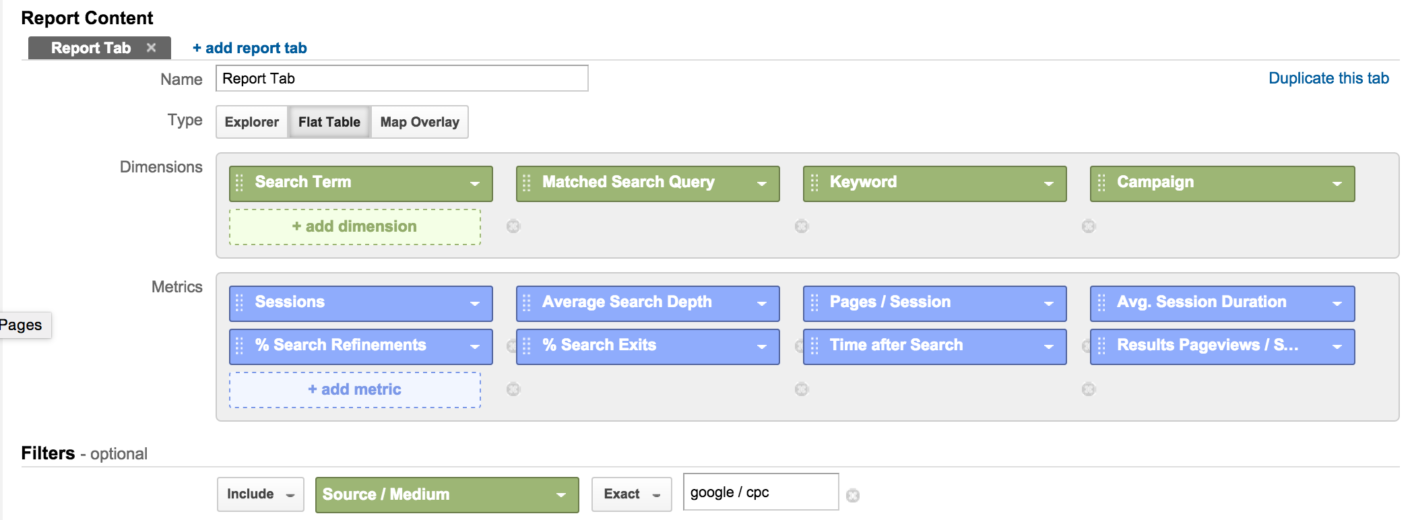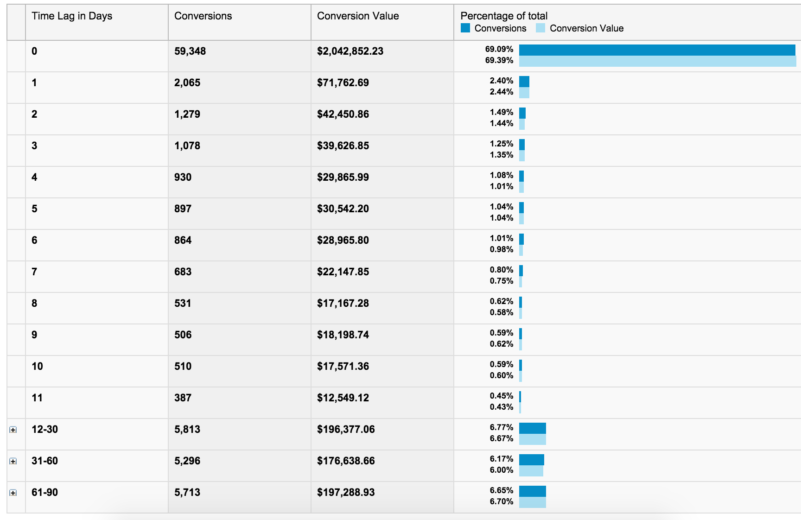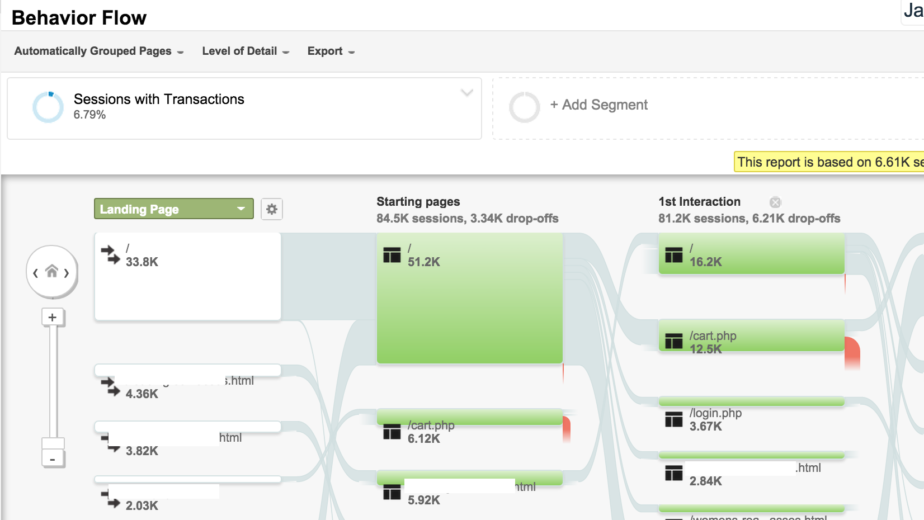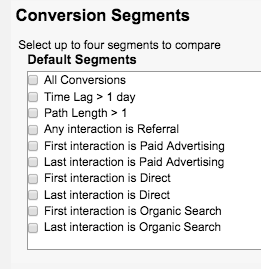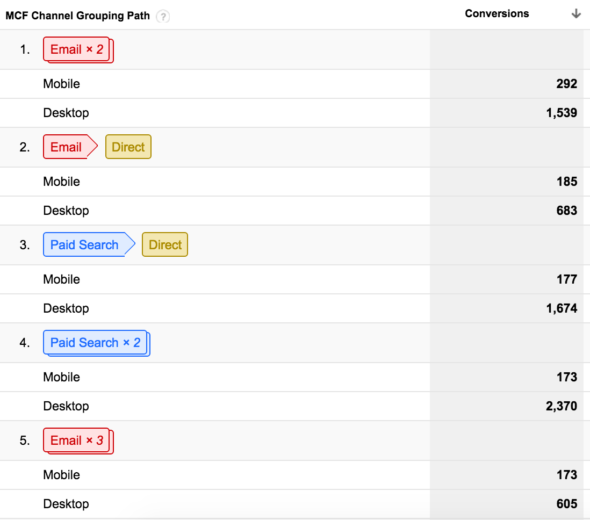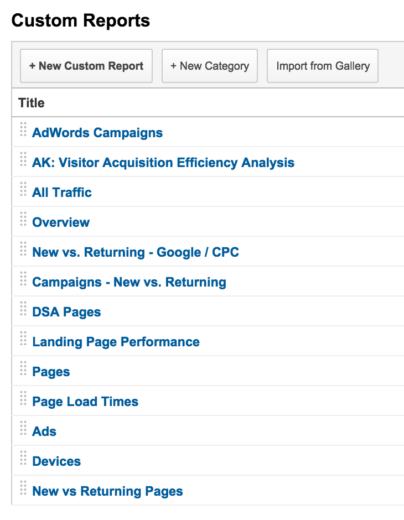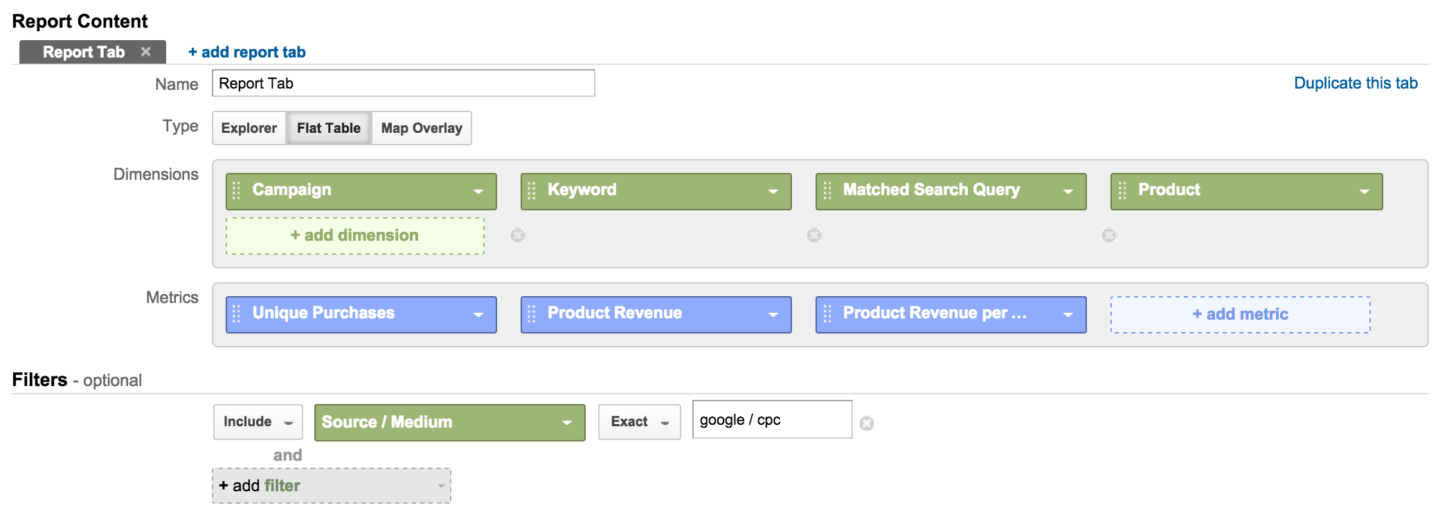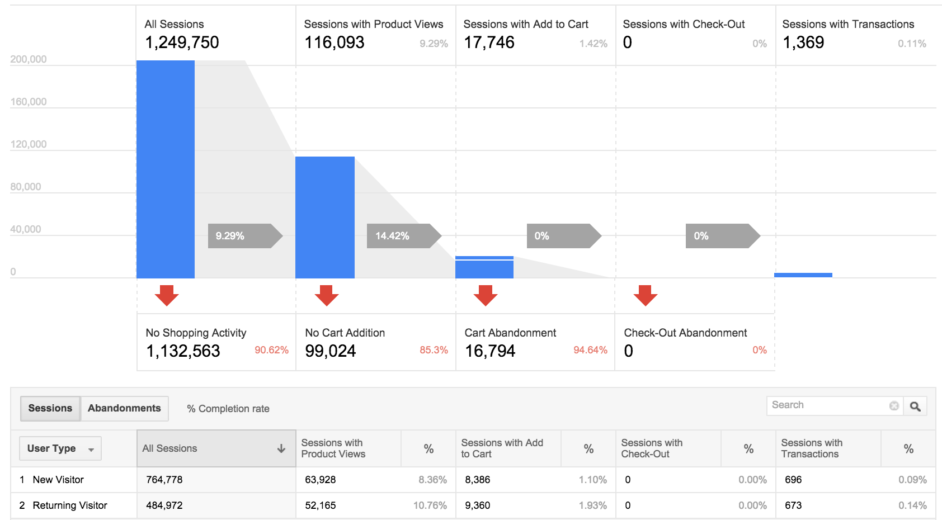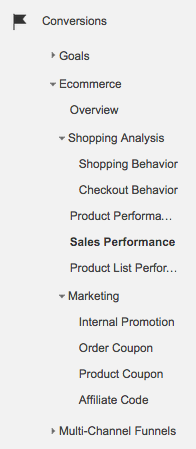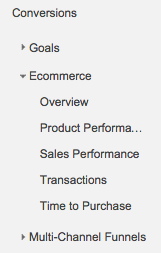Running an ecommerce PPC account, as you would imagine, can be quite different than running a lead generation account. In these instances, we are particularly interested in what the user is doing on the site, which products they’re looking at, and what they are purchasing. In this post, we’ll review 6 ways you can make use of Google Analytics in order to improve your PPC accounts.
1) Site Search
Are the users that come through PPC finding what want? The Site Search report can give you insight as to what users are searching once on your site.
What I like to do is create a flat table in a custom report, so I can view search term, the Google search query, the keyword, and the PPC campaign the user came through.
What should you do with this information? Well, if a user clicks an Ad in Campaign A, but lands on the site and searches for product B, you might need to rethink your campaign structure (maybe you’re using regular broad keywords, or need to add a few negatives).
Another neat use for this report is to get ideas for sitelinks. If you find that users are initially searching for X, but ultimately end up searching for and purchasing product Y, maybe adding product Y as a sitelink is a good test.
2) Time Lag
Sometimes, users take a few days to make a purchase. Maybe they visit the site, view the product selections, but need a few days to think about the purchase (especially if it’s a more expensive product).
Check out the time lag report (located in the Multi-Channel Funnels section of Analytics) to see how long users take to make a final purchase.
With this information, you can create time based remarketing lists. Perhaps you break up remarketing into the following durations:
- 0-30 Days
- 31-60 Days
- 61-90 Days
You can then tailor your ad messaging to each group of customers specifically. Maybe in the first group you want to offer them a coupon code, but the second group will receive free shipping.
Another important item to keep in mind with this report (if you do have a substantial time lag) is to remember that when comparing, for example, last 7 days vs. previous 7 days, the numbers may look a little off. When you’re looking at monthly numbers, it may be best to wait a couple days into the next month to pull those revenue numbers.
3) Custom Segments
There are so many options in terms of custom segments. What you use will vary greatly depending on the account and its specific needs.
One Custom Segment that may be useful to your ecommerce account is the Cart Abandoners segment:
Of course, change that first filter parameter to contain your site’s cart URL.
Sessions with Transactions is also valuable in determining how purchasing customers are interacting with your site. Use this segment in conjunction with the Behavior Flow report:
One other segment you might want to check out is the Repeat Buyers (users who have had more than 1 transaction). What pages are they visiting? How long are they on the site? What are they purchasing?
4) Conversion Segments
Conversion segments are used in the Multi-Channel Funnels, and below is a screenshot of the default segments available:
If you would like a segment more tailored to your needs, feel free to create a new one. For example, you could create one segment for Mobile conversions, and one for Desktop conversions.
If you notice quite a bit of conversion volume comes through mobile traffic via email, it may be worth creating a remarketing list of email visitors, with ad copy tailored to mobile devices (i.e., “shop from your phone”).
5) Custom Reports
If you’ve read my other PPC Hero articles, you know that I love Custom Reports. The Custom Report section in Analytics for my Accounts often look something like this:
The report outline below will allow you to see what a user searched on Google, and which product they ended up buying.
The key here is to look for any patterns that stand out to you. I recommend downloading the data into Excel (of course) and pivoting away. Use this for keyword or ad copy ideas in your PPC accounts. From here you could also get an idea of which products are bringing in the most revenue (or have the highest ROAS – depending on your goals) and which products shouldn’t be the main focus of your PPC efforts.
6) Ecommerce Reports
Located under Conversions > Ecommerce, these reports are built specifically for, you guessed it, ecommerce sites.
Shown above is the Shopping Analysis report. Note that this feature isn’t in all Analytics accounts (I could only find it in one). If your account has access to this report, your side bar navigation will look like this:
If not, you’ll have this:
Closing Thoughts
Analytics can give great insight into user purchasing behavior. If you’ve seen decreases in revenue or conversion rate, I suggest taking the time to look at what’s going on in Analytics. Even if your revenue numbers are steady, and you’re looking to grow, spend some time looking at what products users are interested in and come up with a PPC strategy to push those particular items.



